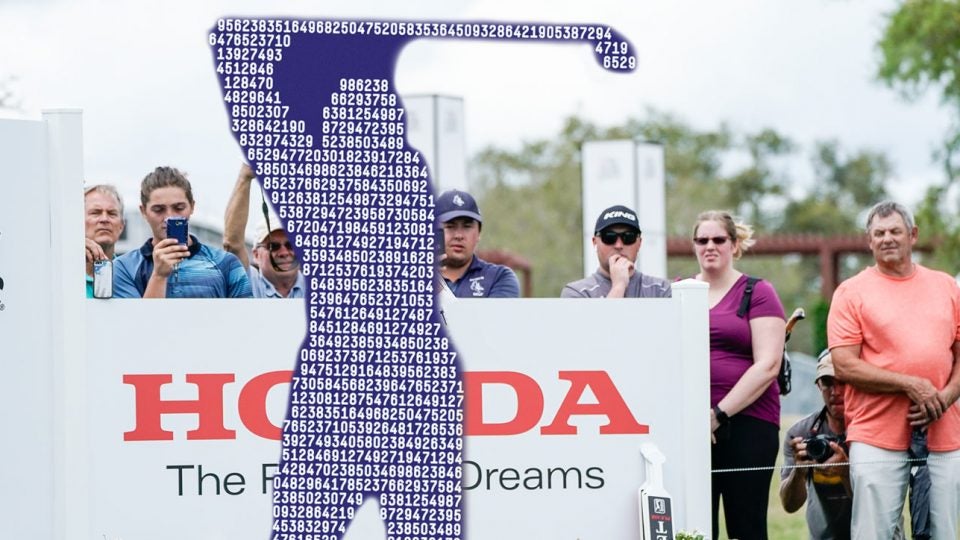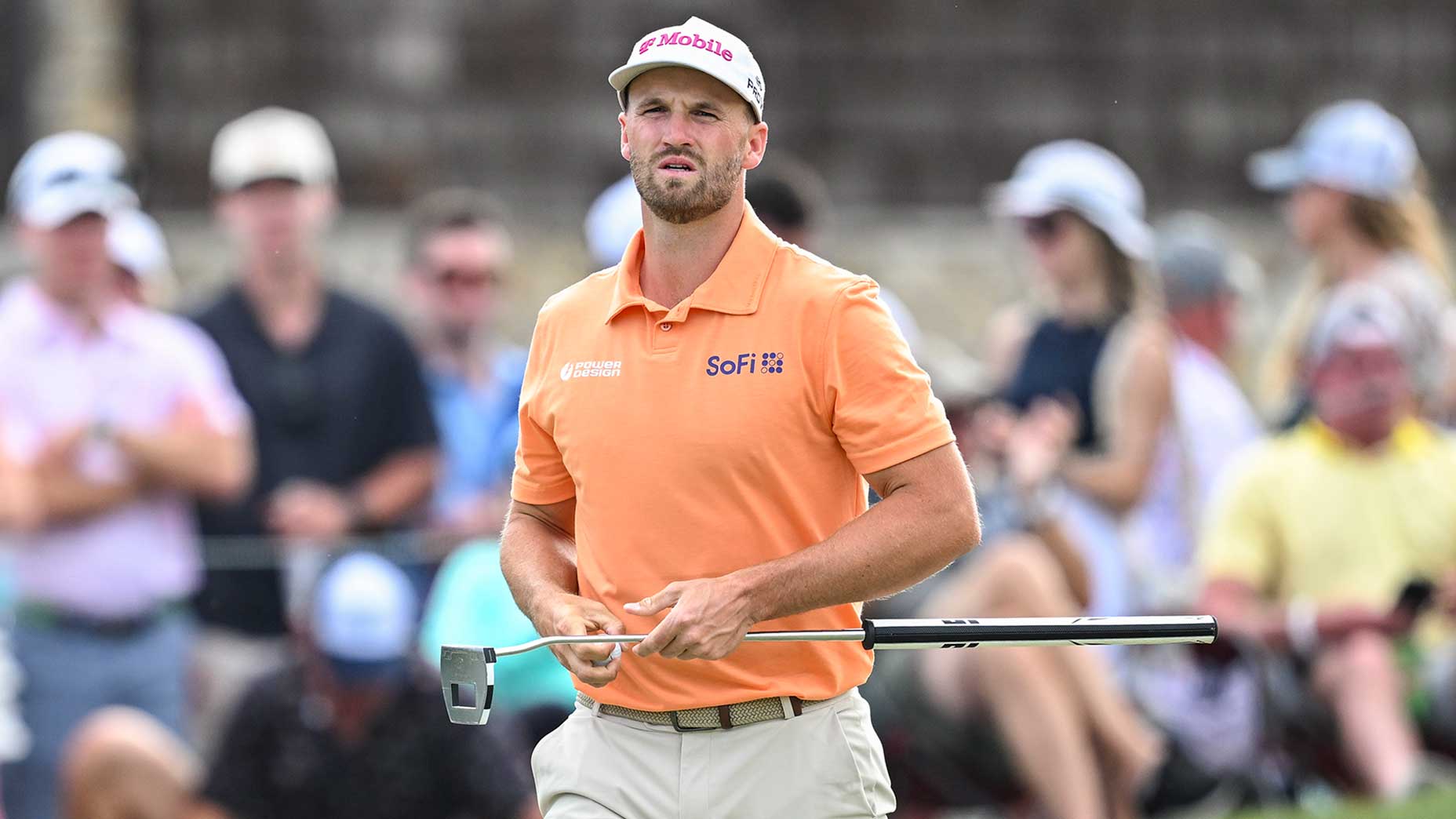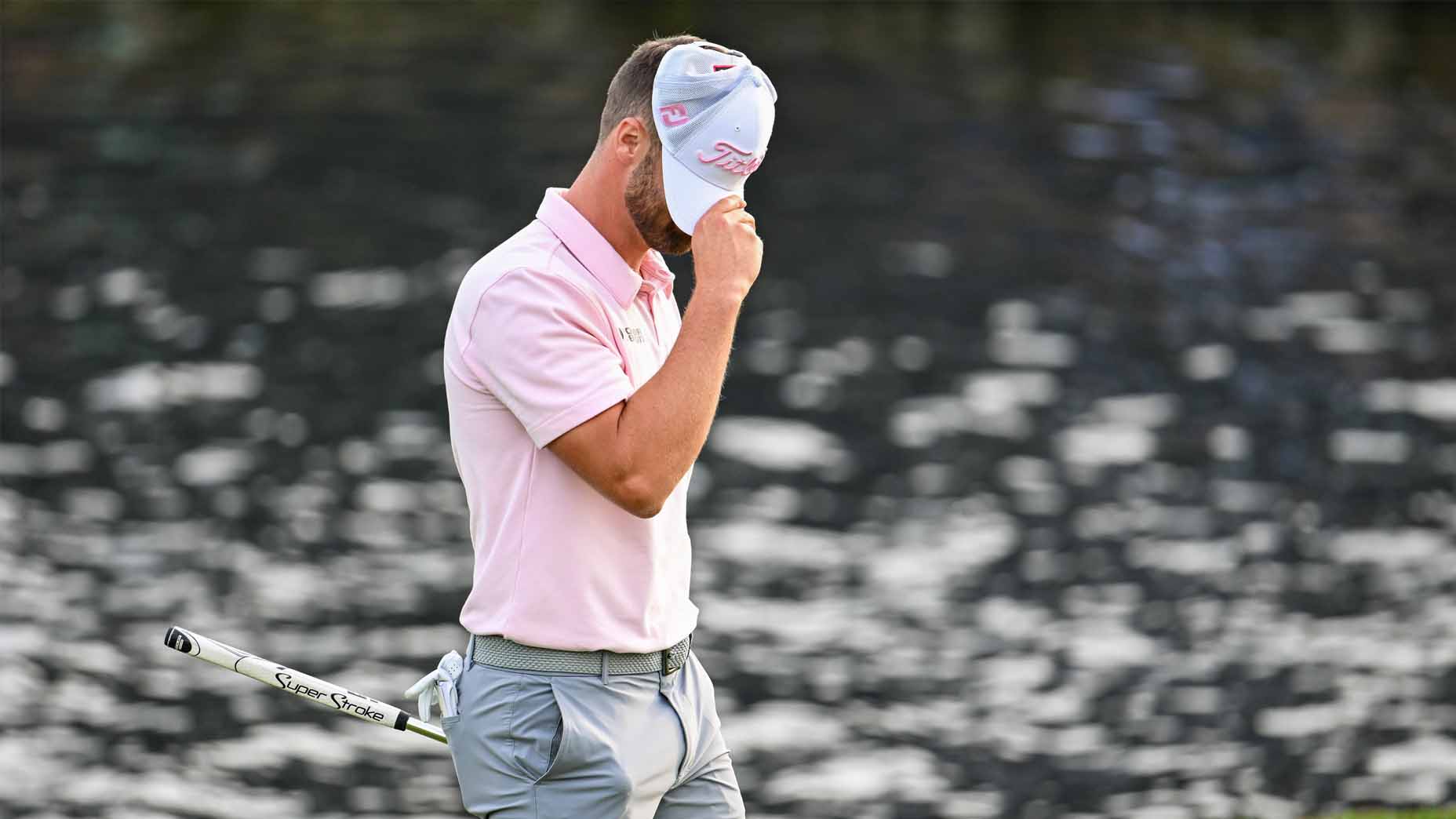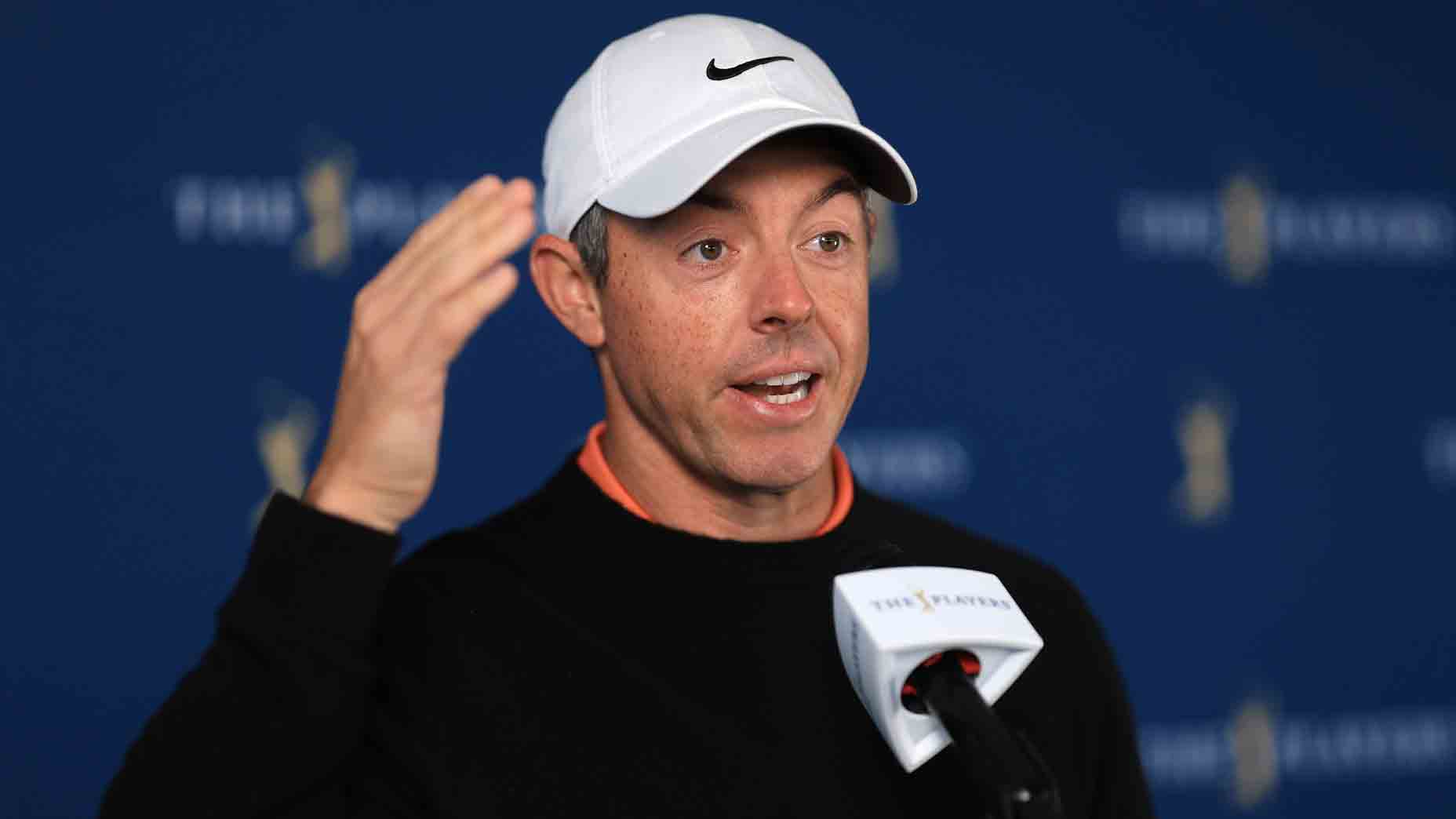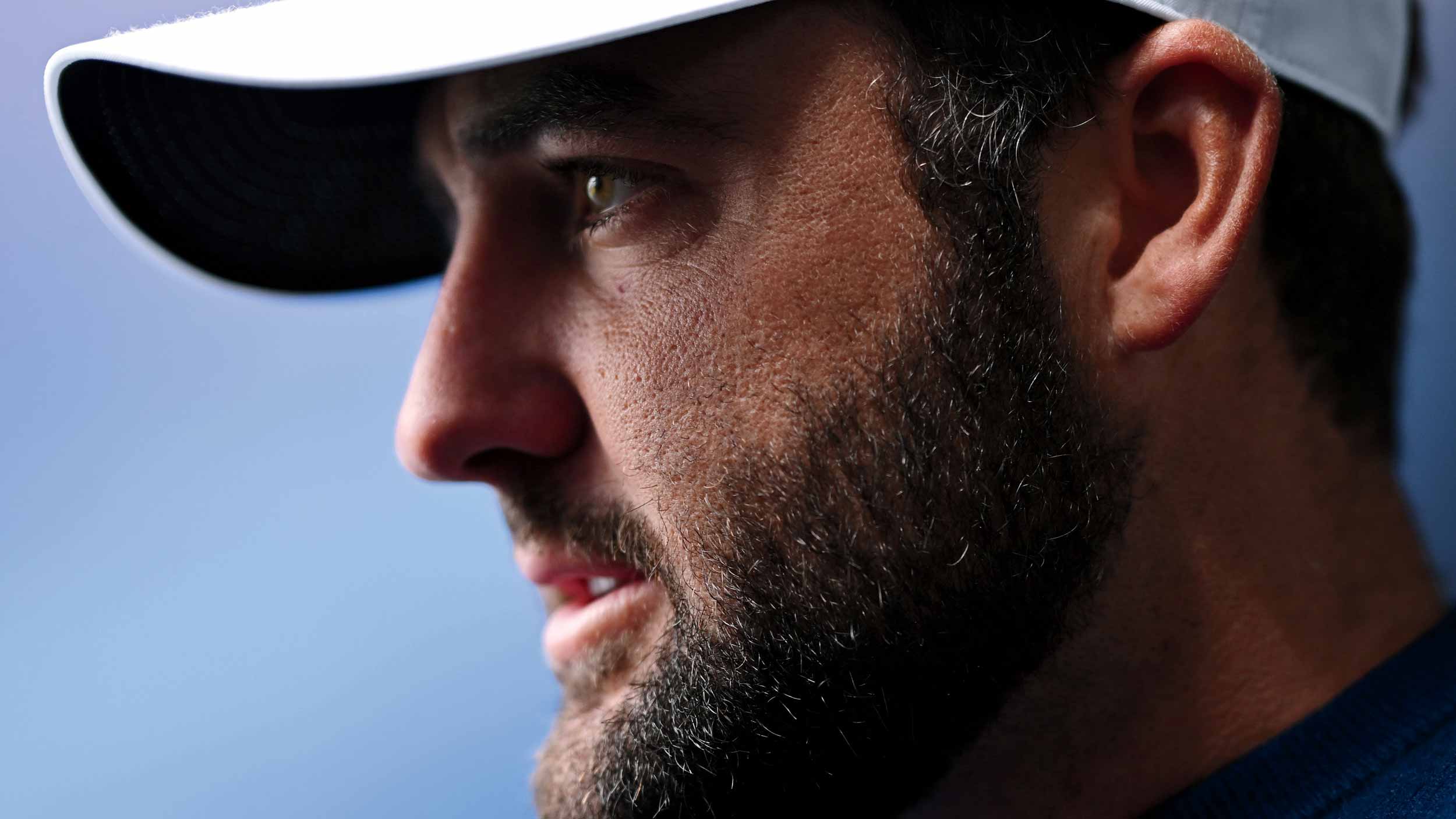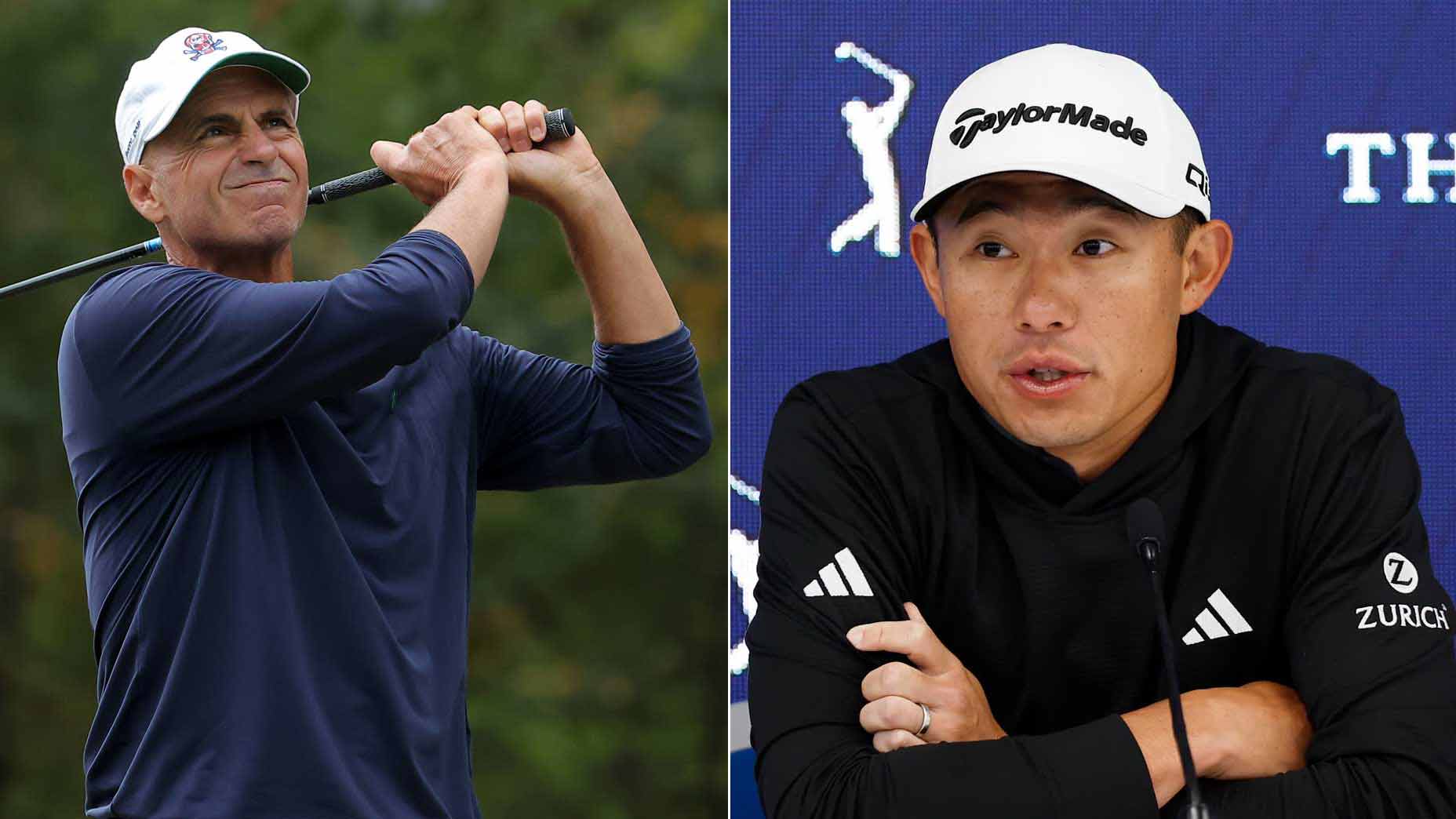Just imagine if you had no idea how football worked. You lacked even a basic understanding. If someone walked up to you and said, “Patrick Mahomes just threw for 450 yards,” they might as well be speaking Esperanto.
Attempting to understand the data my coach Jon Tattersall has given me, numbers produced by six swings with a wedge and two with a 7-iron, is like that for me. Esperanto. TrackMan Esperanto. I know how fast the ball flew, what my launch angle was, and how much sidespin I generated, even if I’m not sure what “sidespin” means. But I have no context for that information. The ball speed on one of my wedge swings was 98.8 mph, my launch angle was 25.8 degrees, and my sidespin was 1,676 rpm. Maybe that’s awesome? Embarrassing? Without the numbers of Dustin Johnson — or, alternately, a three-year-old swinging a piece of raw spaghetti — to compare them with, I have no idea.
Tattersall will eventually tell me if it’s good or bad, but not until I understand that the point of all the data he collects at his Fusion ATL instructional facility is not to make me obsess over every number. The point of data is data — all sorts of figures combining, over vast periods of time, to give a macro view of what’s occurring in a generally consistent fashion. One data point is just that: a mostly meaningless drop in an ocean. Every data point is, in some way, just an outlier.
But no golf shot, I’ve discovered, feels like an outlier. Every golf shot feels like the sum of who you are. If you striped your last drive, you are a good and moral person worthy of walking this planet. If you didn’t, you deserve to crawl into a hole and die. Data? Please. All that matters is how you feel after the last one.
Tattersall says that part of his job as a coach is to fight against this feeling. “There are swings where you can do everything right and the ball will still not do what you want it to,” he says. “Then there are swings when you’re a complete mess but you end up hitting it exactly where you wanted.” The trick, he explains, is to ignore that noise. You want to look at your data in total, not just from one session but as a way to compare them to future sessions. The point is not what your results are. The point is how your results are different from your last session. The point is that you are getting better.
I’ve noticed that Tattersall doesn’t give me a ton of advice before any of my swings, even though I’ve swung a club more times in one hour of instruction than I have in the rest of my life combined. In fact, he even compliments me a lot. Sure, he corrects the little things: if my hands are in the wrong place, if my feet are too close to each other, if I’m holding the club upside down. But on the whole, he lets me flail away. Even though I’m sure I’m doing everything wrong, he lets me go.
“Some coaches spend their time pointing out all the mistakes their clients are making, but I don’t think that’s helpful,” he says. “If I keep telling you what I think you should be doing, you’re going to adjust everything you do just to please me. That’s not necessarily what I want — at first.” What Tattersall prefers is to correct the big things but not the little ones, to worry more about balance and the distribution of weight and power in a swing rather than whether my form is right or even repeatable. His method is to watch my swing, figure out what my natural form is, then mold around that. “We have to find your swing,” he says. “My job is to guide you to what it’s supposed to be.”
Suffice it to say, after an hour of hacking wildly, we haven’t found it yet. But it turns out, my numbers aren’t terrible for someone who has hardly swung a golf club before. “You know how to distribute your weight,” he says. “It’s not a terrible start.” I suspect he’s just trying to make me feel better, but you know what? I did feel good about myself leaving our lesson, and at home I did take time to work on my swing so that my numbers might be better the next time I see him. Which, you know, is likely what he had in mind all along.


